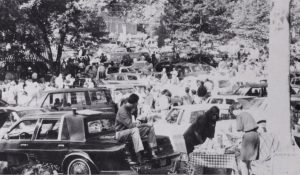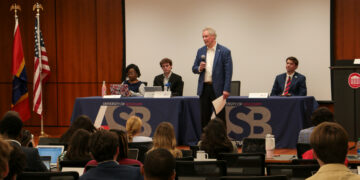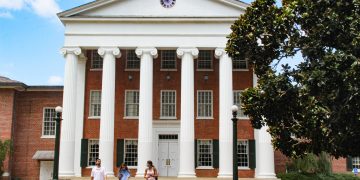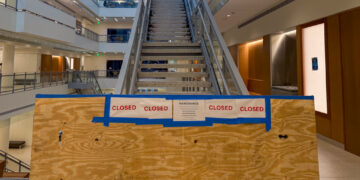After briefly being called “The Glade” by the Ole Miss Yearbook, the Grove earned its name in 1935. Now, one cannot help but picture the Ole Miss experience without the Grove.
Whether that name conjures up images of football fans gathered under colorful tents crowding the 10-acre plot in the center of campus or students walking in the shade of large oak trees on their way to class, it is undeniably the heart of the University of Mississippi.
Many celebrities — Katy Perry, Tim Tebow and Matthew McConaughey, to name a few — and spectators alike have experienced this integral aspect of Ole Miss culture, yet no matter how many people walk through it, no Grove experience is the same.

The Grove as a game day hangout is a relatively modern concept. On Nov. 11, 1893, the Ole Miss football team played its inaugural game, winning 56-0 against Southwest Baptist College. However, the Grove’s role in the game day experience did not occur until the 1950s, when tailgaters began parking cars and RVs there.
In a thesis entitled “The Grove: Stories of Cultivating Connections,” Sally McDonnell Barksdale Honors College graduate Mitchell Dowden explained how the Grove can be used to analyze the rich history of the university, covering everything from the landscaping of the Grove to how this tract was a microcosm for the larger cultural shifts happening at Ole Miss regarding integration.
“Before the Grove was covered in tents each home game, people used to come to campus, park their cars, open the tailgate and maybe set up a card table with some food. Simple and humble, the beginnings of the Grove weren’t as lavish as today’s tailgating; it was more of a picnic atmosphere,” Dowden said.
Until the 1980s, only about two of the Ole Miss football team’s games were played at home – big games were played in more densely populated areas.
“In the South, it was kind of a thing to take your games to where the people are, to the cities like Jackson or Birmingham or Memphis. Now, the Grove, the development of the Grove and the notoriety of the Grove has also come through because we have more games in Oxford,” Roberson said.
The tradition of parking cars in the Grove stopped in 1992 after a series of massive rain storms in 1991 turned the lush green Grove into something more closely resembling a 10-acre mud pit.
University officials decided that in order to keep the Grove healthy, it could no longer be used as a parking lot. Initially, the decision faced great pushback from the public, but it led to the modern day Grove full of open-air tents and camaraderie.
Under its 160 trees composed of 50 different species, the Grove looks a lot different than it did when Robert Fulton set the plot of land aside during his time serving as the university’s seventh chancellor from 1892 to 1906.
Nowadays, between 20,000 and 60,000 people flock to the center of campus on each home game to visit with fellow fans under tents adorned with chandeliers and flatscreen TVs.
As much as it is a game day experience, there is a duality to the Grove, making it so much more than a place to spend Saturdays in the SEC. It is also a place where the entire student body can congregate for free fall and spring concerts and the beginning of a student’s Ole Miss experience through orientation, as well as where students celebrate their final moments as a student at UM during commencement ceremonies.


























